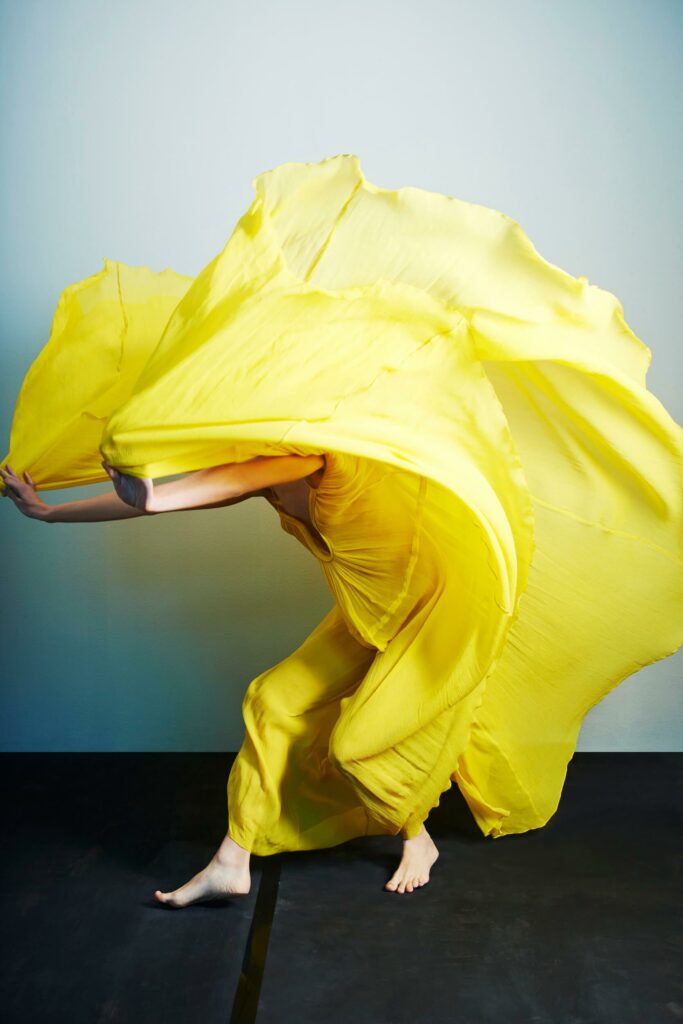Emancipated vision of bodies: a female representation?
“All this opposition of sex to sex, of quality to quality, all this claim of superiority and this imputation of inferiority, belongs to the phase of the primary schools of human existence. » Virginia Woolf, a room of one’s own
Particularly, a feminine image is revealed, of a whimsical young woman, no doubt at first sight. Rather unconditioned, not responding to the formats or forms that are addressed to it, let’s say that it would be quite close to it, the expression of an identity of a now rather than the simple receptacle of fantasized projections or refrain of being the object of desire. The young woman as subject in Sophie Delaporte takes up the figure so well described by Virginia Woolf, emancipated to be and to live, as in the book a room of one’s own the question is exposed. Offbeat in style or etiquette, no doubt, but to the benefit of a freedom won.
A non-fetish image as well. The idea of a woman freed from this stereotyped gaze and who does not for all that avoid the notion of beauty, freed from any prior representation and developing, on the level of intimacy, an image of herself and instantly of a other body. A woman who doesn’t give a damn about the gaze of men first, iconoclastic in this sense, but also of others (photographers as muses), out of sterile rivalries. The subject is face to face with the photographer, in an open dialogue. This related image appears because it is a sine qua non for Sophie Delaporte. A method of intimacy developed from childhood, games between young women; the author thus photographs his sisters in moments of daily settings where seduction does not exist but where the moment of capture prefigures the joy of disguise, of constructing a visual and tactile appearance; framing that addresses the subject bluntly. Far from responding to selfies and other narcissus portraits, a completely different affirmation is proposed, of a suspended vision, of an animated and moving identity. In this distancing, without makeup or over-theatricality, in this sense without the obligation of glamor or the commercial register, the image made is the experience of an expression of its own.
In the photographic game, in the relationship to the model, we quickly feel it when looking at his images, the frame plays full, semi-detached. From the author’s gaze on these people in the moment lived with unfeigned attention and pleasure. One thinks of the “Pompon” photograph for I-D, 1998, thumbing its nose at a certain representation of the time, at the time of pornochic. “Pompon” develops a pose with a temperament completely foreign to the literal seduction of the time, her back bent, her eye turned away from the camera while she wears this clownish red woolen nose. The subversive is not in the suggestive explicit but rather there in the confident nature of the moment photographed. That the subject is feminine and masculine finally, the approach is tender. The consideration of the human figure in the photographic field of the relationship to the model, of the subversive work that this implies if we speak of the confident abandonment of the model, or of frank honesty, let’s say. To play the pose and not be fooled.
Proximity, of a physical and sensitive order, delivers the moving identity of the subjects photographed carried by the frame of the camera, in the wake of Francesca Woodman, with the same intention of an acute and delicate approach. Sophie Delaporte invites the subject to invent herself as a woman artist, a manifesto of a being who is an actress of her own image. The model here configures its identity. It would almost also be a hollow self-portrait, where the model is the double of the author herself. Dreaming up your posture, inventing your image through the mirror of photography. Like Claude Cahun, engaged as emancipated.
Fashion without fashion? The ingredient garment.
The garment is a “hook, the piece of cheese in the mousetrap” like Henry James.
A second line emerges from the work of Sophie Delaporte, another proximity, the indistinct part that is played between her artistic work and the published series produced for editorial fashion. Working on the moment, the constituent elements of photography are borrowed from a quality of the present where the importance of the body, the look, the decor and the clothing are particular and indisputable ingredients, to make a portrait.
To « liberate from fashion what poetry it may contain in the historical, to draw the eternal from the transitory » to quote only Baudelaire (the painter of modern life) and to consider the photographic medium as the catalyst of this possible world, and of its archived image. Much is based on this in the work of Sophie Delaporte for whom fashion is the terrain, the laboratory and clothing the possible extension, an ingredient of this world of blessed living beings. However, what is at stake is more the relationship

Emancipated vision of bodies: a female representation?
“All this opposition of sex to sex, of quality to quality, all this claim of superiority and this imputation of inferiority, belongs to the phase of the primary schools of human existence. » Virginia Woolf, a room of one’s own
Particularly, a feminine image is revealed, of a whimsical young woman, no doubt at first sight. Rather unconditioned, not responding to the formats or forms that are addressed to it, let’s say that it would be quite close to it, the expression of an identity of a now rather than the simple receptacle of fantasized projections or refrain of being the object of desire. The young woman as subject in Sophie Delaporte takes up the figure so well described by Virginia Woolf, emancipated to be and to live, as in the book a room of one’s own the question is exposed. Offbeat in style or etiquette, no doubt, but to the benefit of a freedom won.
A non-fetish image as well. The idea of a woman freed from this stereotyped gaze and who does not for all that avoid the notion of beauty, freed from any prior representation and developing, on the level of intimacy, an image of herself and instantly of a other body. A woman who doesn’t give a damn about the gaze of men first, iconoclastic in this sense, but also of others (photographers as muses), out of sterile rivalries. The subject is face to face with the photographer, in an open dialogue. This related image appears because it is a sine qua non for Sophie Delaporte. A method of intimacy developed from childhood, games between young women; the author thus photographs his sisters in moments of daily settings where seduction does not exist but where the moment of capture prefigures the joy of disguise, of constructing a visual and tactile appearance; framing that addresses the subject bluntly. Far from responding to selfies and other narcissus portraits, a completely different affirmation is proposed, of a suspended vision, of an animated and moving identity. In this distancing, without makeup or over-theatricality, in this sense without the obligation of glamor or the commercial register, the image made is the experience of an expression of its own.
In the photographic game, in the relationship to the model, we quickly feel it when looking at his images, the frame plays full, semi-detached. From the author’s gaze on these people in the moment lived with unfeigned attention and pleasure. One thinks of the “Pompon” photograph for I-D, 1998, thumbing its nose at a certain representation of the time, at the time of pornochic. “Pompon” develops a pose with a temperament completely foreign to the literal seduction of the time, her back bent, her eye turned away from the camera while she wears this clownish red woolen nose. The subversive is not in the suggestive explicit but rather there in the confident nature of the moment photographed. That the subject is feminine and masculine finally, the approach is tender. The consideration of the human figure in the photographic field of the relationship to the model, of the subversive work that this implies if we speak of the confident abandonment of the model, or of frank honesty, let’s say. To play the pose and not be fooled.
Proximity, of a physical and sensitive order, delivers the moving identity of the subjects photographed carried by the frame of the camera, in the wake of Francesca Woodman, with the same intention of an acute and delicate approach. Sophie Delaporte invites the subject to invent herself as a woman artist, a manifesto of a being who is an actress of her own image. The model here configures its identity. It would almost also be a hollow self-portrait, where the model is the double of the author herself. Dreaming up your posture, inventing your image through the mirror of photography. Like Claude Cahun, engaged as emancipated.
Fashion without fashion? The ingredient garment.
The garment is a “hook, the piece of cheese in the mousetrap” like Henry James.
A second line emerges from the work of Sophie Delaporte, another proximity, the indistinct part that is played between her artistic work and the published series produced for editorial fashion. Working on the moment, the constituent elements of photography are borrowed from a quality of the present where the importance of the body, the look, the decor and the clothing are particular and indisputable ingredients, to make a portrait.
To « liberate from fashion what poetry it may contain in the historical, to draw the eternal from the transitory » to quote only Baudelaire (the painter of modern life) and to consider the photographic medium as the catalyst of this possible world, and of its archived image. Much is based on this in the work of Sophie Delaporte for whom fashion is the terrain, the laboratory and clothing the possible extension, an ingredient of this world of blessed living beings. However, what is at stake is more the relationship


© 2023 Sophie Delaporte. All rights reserved.